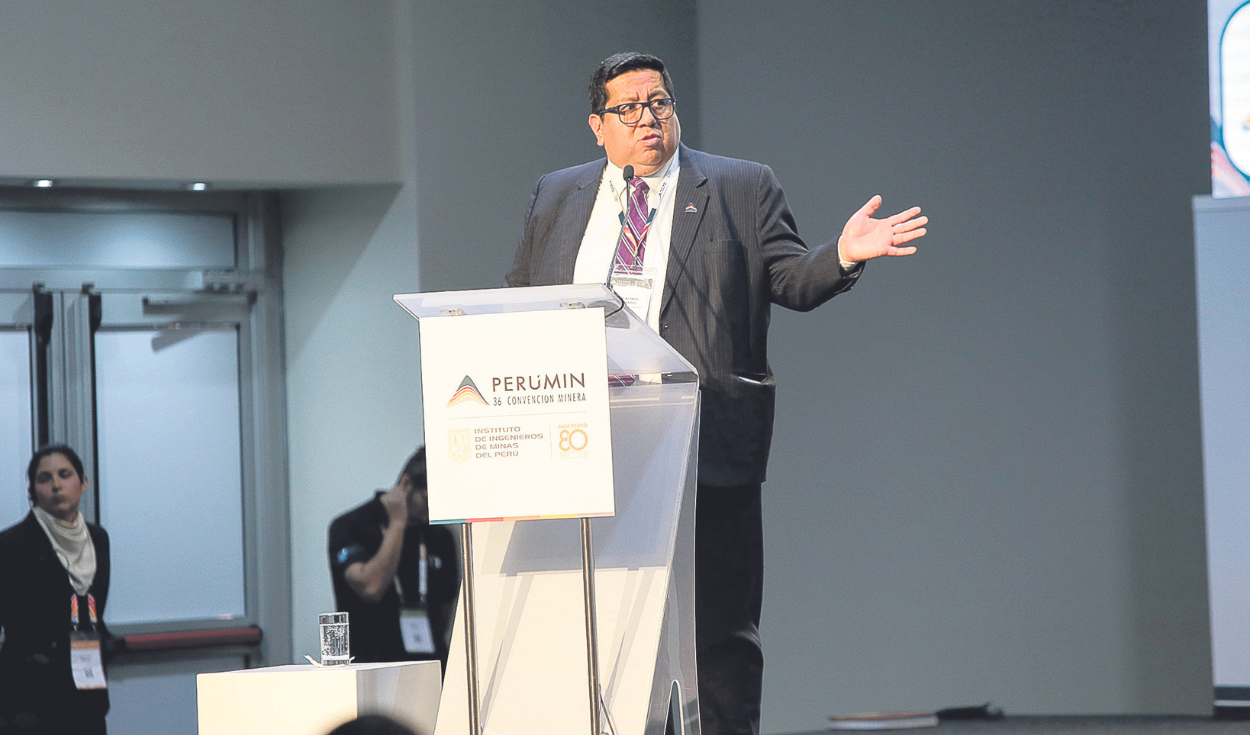
In a year where private investment in mining is expected to fall 18%, the Government of Dina Boluarte is playing its cards to keep business interest afloat – whose expectations have remained in negative territory for two and a half years – and they guaranteed that no They will violate the current tax collection scheme for this sector.
“There will be no tax changes. All changes aimed at increasing the collection capacity will be based on the fight against informality, the expansion of the tax base and significant improvements in the treasury and public spending,” the head mentioned at the closing of Perumin 2023. of the Ministry of Economy and Finance (MEF), Alex Contreras.
It is worth mentioning that so far this year, revenue in mining and hydrocarbons fell 43.4% (and 47.6% only in the mining subsector); Otherwise, production rose 10.01% accumulated to July and in the last twelve months, 13.35%, according to INEI figures.
calm the waters
Given the deterioration of the business trust and political instability, in a scenario where more than 80% of the population rejects the management of Dina Boluarte and Congress, according to the Institute of Peruvian Studies (IEP), Contreras’ words give the blow to an initiative cooked up during the government of Pedro Castillo: raise taxes on mining in the face of the metals boom.
And with the pandemic, gold, zinc and copper reached values not seen in just over a decade, which gave room – at the proposal of the then minister Pedro Francke – to capture more resources, for example, from mining profits, as long as its operating profits are high. In 2021 you are recorded revenues of US$13.5 billion. However, Congress denied this possibility and excluded it from the package of legislative powers provided in times of coronavirus.
Contreras Miranda emphasized that predictability is important, and therefore, they will maintain the current scheme that governs mining.
Does not matter the time, CooperAction remember that prices, in year-on-year terms, are still high: copper (+8.0%), gold (+14.4%) and silver (+22.9%). Zinc alone fell 21.4%, but it still exceeds what was seen at the beginning of 2020. Likewise, Peruvian tax pressure continues to contract since the second quarter of last year (17.4% of GDP) and now stands at 15. 6%, far from Brazil (22.4%), Chile (21.1%) and Argentina (20%).
Mining hub in the south
The official assured that “mining covers 11% of the GDP and total investment, respectively, added to the fact that in the last 20 years the exports they grew 14 times,” and celebrated that Perumin left a horizon of more than US$50,000 million in projects “that we can all carry out.”
“We are working to create a mining hub in the south so that public investment complements private investment. For this reason, in (the Public Budget) 2024, more than one billion soles were allocated for 37 municipalities in the southern zone,” he pointed out.
Recognized the importance of dialogue with communitiesfor which the MEF’s specialized monitoring team will continue to focus on unblocking operations.
Furthermore, to encourage extractive activity, he assured that “they will give more push” to all their productive stages, with the materialization of the Digital Single Window and regulatory optimization being vital here so that procedures and responses are faster. “A high-level commission has been created to monitor projects, both public and private investment, so that the most important decisions are made in a timely and rapid manner,” he said.
Cautious responses from the MEF
The OECD –a block that Peru aspires to join– recently warned that our market is highly concentrated and does not leave room for competition.
When approached by this newspaper, Contreras pointed out that The idea of these observations is to reduce the barriers that prevent the entry of new companies.
And, in macroeconomic matters, he insisted that it not fall into poles, especially negative, since with the programs to promote MSEs and supplementary credits with maximum fiscal policy, they will ensure GDP growth – which this year, according to of the BCRP, would be 0.9%, its weakest variation, excluding the pandemic, in 20 years.
Source: Larepublica
Alia is a professional author and journalist, working at 247 news agency. She writes on various topics from economy news to general interest pieces, providing readers with relevant and informative content. With years of experience, she brings a unique perspective and in-depth analysis to her work.











